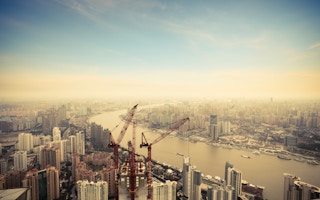Asia’s urban population is set to soar from 1.9 billion in 2011 to 3.3 billion by 2050, a shift that is expected to place considerable strain on the continent’s physical infrastructure – roads, energy, food and water resources, waste management capabilities – as well as the ability of leaders to manage this urbanisation effectively.
To continue reading, subscribe to Eco‑Business.
There's something for everyone. We offer a range of subscription plans.
- Access our stories and receive our Insights Weekly newsletter with the free EB Member plan.
- Unlock unlimited access to our content and archive with EB Circle.
- Publish your content with EB Premium.
Despite this daunting challenge, said Vijay Jagannathan, World Resources Institute senior fellow, “the glass is half full” when it comes to reaping the opportunities that managing this urban growth will bring. The optimism, he explained, was due to the fact that expanding middle class in Asian cities, along with their rising expectations and purchasing power, present major opportunities for clean energy and resource efficiency.
He was speaking at a discussion at the Clean Enviro Summit Singapore on Monday, which was held in conjunction with the World Cities Summit and Singapore International Water Week at the Sands Expo and Convention Centre.
In his opening address at the plenary of the summit, Singapore’s Minister for the Environment and Water Resources Vivian Balakrishnan predicted that “as Asia’s cities take off, some cities will continue to grow and be attractive; others will be stifled and atrophy under the weight of their own pollution”.
Jagannathan echoed Balakrishnan’s views, saying, “if you look at any city in developing countries, most would agree that the glass is half empty, because of the pollution and congestion”.
However, the glass is indeed “half full” of great opportunities for sustainable growth, he stressed, should businesses and political leaders make the right decisions going forward.
“In large countries like India and Indonesia, the energy system doesn’t function well… Most people have diesel generators to supplement an unreliable grid supply. Energy access can be greatly enhanced by bringing in new technologies such as distributed generation and smart metering,” he explained.
“
Clear political leadership that sets an ambitious sustainability agenda gives businesses the security to invest in green technologies.
Kristen Brosbøl, Danish environment minister
The market is “limitless”, Jagannathan said, “because there is no way on earth that the public sector is going to provide this in the next few years”.
To cash in on these market opportunities, clear political leadership that set an ambitious sustainability agenda is a must, Danish environment minister Kirsten Brosbøl, who was also speaking at the discussion titled “Charting a sustainable path: opportunities and potential for Asia”, pointed out.
To wit, Denmark has an ambitious plan called the Energy Strategy 2050, which details the country’s goal to be totally independent of fossil fuels by 2050. This strategy relies on strong environmental regulations, economic measures, and proactive awareness campaigns, shared Brosbøl.
“Politics sets the stage to give businesses the security to invest in green technologies”, she said, while citing the fact that 10 per cent of Danish exports were green products, and 20 per cent of Danish companies provided environmental solutions.
An urbanising Asia can potentially create new ways for government leaders to strengthen public trust, said the panel of experts at the plenary. Singapore can also showcase its best practices at a global scale, they noted.
“For public policy, our starting point should be what citizens want”, said Balakrishnan. “There are a few unique areas that governments need to focus on”. He went on to list a long-term vision, detailed masterplans, setting aside adequate resouces for infrastructure development, effective disaster management and transparency as areas that policy would need to focus on in order to achieve a vibrant, sustainable city.
“Because our back is against the wall”, added Balakrishnan, referring to Singapore’s inevitable dependence on imported water, energy and food, “we will always need innovative solutions to solve our existential problems”.
“The solutions that we generate in Singapore for water, food and infrastructure; the way we organise our industry and education system – those solutions will be in demand in the hundreds and thousands of cities that are coming up all over Asia”, he said.
Singapore’s vision for realising this opportunity, said Balakrishnan, was for someone to visit the city state and walk away with the insight, “I have seen the future, and it works”.












